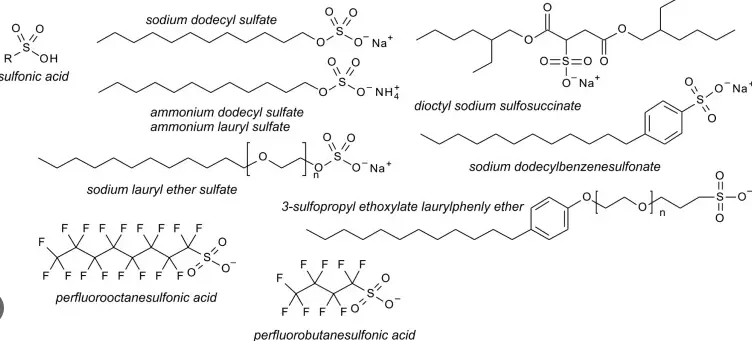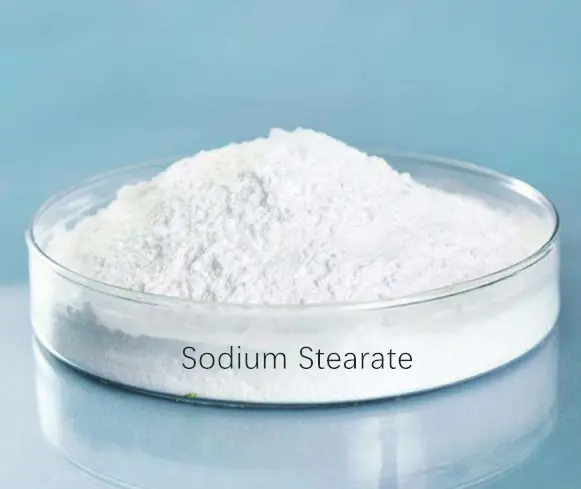Sodium stearate and sodium oleate are two chemical compounds extensively utilized in various industrial applications, from cosmetics to pharmaceuticals. These compounds, though similar in their sodium base, possess distinct chemical structures and properties that confer unique advantages in different contexts. Their roles are crucial in the production and formulation of numerous everyday products.
Sodium stearate, a sodium salt of stearic acid, is primarily used as a surfactant and thickening agent, notable for its role in soap making and as a release agent in the production of rubber. On the other hand, sodium oleate, the sodium salt of oleic acid, serves as a cleansing agent and an emulsifier, predominantly in cosmetics and cleaning products. Each compound’s applications leverage its unique chemical properties to enhance product performance and stability.
Exploring their chemical makeup, sodium stearate presents as a white powder with greasy characteristics, whereas sodium oleate is a light brown to yellowish viscous liquid. These physical attributes underline their compatibility with various solvents and their functional roles in product formulations, highlighting their industrial significance and the diversity of their applications.

Sodium Stearate Explained
Chemical Structure
Sodium stearate is a white, waxy substance, known scientifically as the sodium salt of stearic acid. It has the formula C18H35NaO2. This compound is characterized by a long, non-polar hydrocarbon chain and a polar carboxylate group, which makes it an excellent surfactant. Its molecular structure allows it to effectively reduce the surface tension between different substances, aiding in the blending of ingredients that would not typically mix, such as oil and water.
Production Methods
Sodium stearate is produced primarily through the saponification process of animal fats or vegetable oils with sodium hydroxide. This process involves several steps:
- Hydrolysis: Fats or oils are hydrolyzed, resulting in fatty acids and glycerol.
- Neutralization: The fatty acids are then neutralized with sodium hydroxide, resulting in the formation of sodium stearate and water.
This method is both efficient and scalable, making sodium stearate readily available for industrial use.
Common Uses
Sodium stearate has a variety of uses in different industries due to its surfactant properties. Some of its most common applications include:
- Soaps and detergents: It acts as a thickener and emulsifier.
- Cosmetics: Used in creams and lotions to stabilize the formulation.
- Pharmaceuticals: Serves as a base for certain types of medications.
- Rubber industry: Used as a release agent.
Sodium Oleate Overview
Chemical Composition
Sodium oleate, or sodium salt of oleic acid, is represented by the formula C18H33NaO2. Similar to sodium stearate, it consists of a long fatty acid chain and a sodium ion. The presence of a double bond in the fatty acid chain of sodium oleate makes it less saturated compared to sodium stearate, influencing its physical and chemical properties.
How It’s Made
The production of sodium oleate follows a process similar to that of sodium stearate:
- Saponification: Oleic acid, obtained from sources such as olive oil or other vegetable oils, is combined with sodium hydroxide.
- Resulting reaction: This results in the formation of sodium oleate and glycerol. The process is carried out under controlled conditions to ensure purity and consistency in the final product.
Key Applications
Sodium oleate finds its applications in various areas including:
- Textile industries: Used as a lubricant and cleansing agent.
- Personal care products: Common in shampoos and soaps for its emulsifying properties.
- Paper manufacturing: Helps in pulp processing.
Comparative Analysis
Physical Properties
- State at room temperature: Sodium stearate is solid, while sodium oleate is usually found as a viscous liquid.
- Solubility: Both compounds are soluble in water; however, sodium oleate tends to form more stable emulsions.
Chemical Differences
The main chemical difference between the two lies in their saturation. Sodium stearate is fully saturated, containing no double bonds, making it more stable under heat and less reactive compared to sodium oleate, which contains one double bond.

Benefits and Drawbacks
Advantages in Various Uses
- Sodium Stearate: Its stability and melting point make it ideal for solid soaps and as a thickening agent in various products.
- Sodium Oleate: The presence of a double bond increases its flexibility, making it suitable for liquid formulations and as a conditioning agent in cosmetics.
Potential Limitations
While both sodium stearate and sodium oleate are versatile, they have limitations:
- Environmental concerns: Both are derived from natural oils and fats, which raises concerns about sustainable sourcing.
- Reactivity: Sodium oleate’s unsaturation can lead to oxidation, potentially affecting the shelf life of products containing it.

Industrial Applications
Role in Cosmetics
Sodium stearate and sodium oleate are pivotal in the cosmetics industry, each serving specific roles that enhance product efficacy and consumer appeal. Sodium stearate is primarily used for its gelling and thickening properties, which are essential in products like deodorants, foundations, and various skin care formulations. It contributes to the texture and stability of these products, making them more user-friendly and long-lasting. Sodium oleate functions as an excellent emulsifier and cleansing agent, commonly found in soaps, shampoos, and facial cleansers. Its ability to emulsify dirt and oil makes it a preferred ingredient in products intended for oily skin and hair care.
Uses in Pharmaceuticals
In the pharmaceutical sector, both compounds are utilized for their safety and effectiveness as excipients:
- Sodium stearate is used in the manufacture of tablets as a lubricant to prevent ingredients from sticking to manufacturing equipment during the compression of chemical powders into solid forms.
- Sodium oleate serves a dual role as both an emulsifier and a surfactant, facilitating the absorption of active ingredients in creams and lotions, and improving product texture and application.
Importance in Food Processing
Sodium stearate and sodium oleate also find applications in the food processing industry. Sodium stearate acts as an anti-caking agent in powdered foods, helping to ensure that products remain free-flowing and easy to handle. Sodium oleate, meanwhile, is used as a conditioning agent in the production of baked goods, enhancing texture and shelf life. Its use is carefully regulated to ensure compliance with food safety standards.
Environmental Impact
Biodegradability
Both sodium stearate and sodium oleate are considered biodegradable. They break down into simpler substances when exposed to biological processes in the environment, which means they are less likely to accumulate and cause pollution. This biodegradability makes them preferable to many synthetic alternatives, which may persist in the environment and contribute to ecological damage.
Ecological Concerns
Despite their biodegradability, the production and use of sodium stearate and sodium oleate are not without ecological concerns. The sourcing of raw materials, often from palm oil or other vegetable oils, can contribute to deforestation and habitat loss if not managed sustainably. Additionally, the byproducts of their manufacture, if not properly treated, can contribute to water pollution. Ensuring that these compounds are produced sustainably is crucial to minimizing their environmental footprint.
Future Prospects
Innovations in Production
The production of sodium stearate and sodium oleate is an area ripe for innovation, particularly with the push towards greener chemical processes. Recent advancements focus on using less energy and reducing waste in production. For example, methods are being developed that utilize enzymes to catalyze reactions more efficiently and at lower temperatures, which could significantly reduce the environmental impact of production.
Emerging Applications
Looking ahead, the role of sodium stearate and sodium oleate is set to expand into new areas. Research is currently underway to explore their potential in renewable energy applications, particularly in improving the efficiency and lifespan of lithium-ion batteries. Sodium stearate can help stabilize the electrolyte interface in batteries, while sodium oleate has been studied for its role in bio-based lubricants and greases, which are crucial for reducing reliance on petroleum-based products.
Frequently Asked Questions
What is Sodium Stearate?
Sodium stearate is the sodium salt of stearic acid, widely used in the manufacturing of soaps and cosmetics. It acts primarily as a surfactant, helping to lower the surface tension between ingredients, which enhances the texture and performance of products.
What is Sodium Oleate?
Sodium oleate is a fatty acid derived from natural oils and fats. It is used as a surfactant and emulsifier in various personal care products, effectively helping to mix oil and water components, which improves the consistency and efficacy of products.
How are Sodium Stearate and Sodium Oleate Different?
While both sodium stearate and sodium oleate are used as surfactants, sodium stearate is solid at room temperature, making it ideal for solid soaps and powders. Sodium oleate, being liquid, is more suited for liquid cleansers and detergents.
What are the Environmental Impacts of These Compounds?
Both sodium stearate and sodium oleate are considered biodegradable. However, their production and usage must be managed to minimize environmental impact, particularly in terms of sourcing raw materials and the processing involved.
Can Sodium Stearate and Sodium Oleate Be Used Interchangeably?
Although they share some applications, their differences in physical form and chemical behavior often dictate specific uses in formulations. This means they are not typically interchangeable without considering the desired properties and outcomes of the final product.
Conclusion
Sodium stearate and sodium oleate play pivotal roles in the formulation of a myriad of products, each bringing specific benefits to the table. Understanding their distinct characteristics helps industries tailor applications that maximize product efficacy and consumer satisfaction. The ongoing exploration and utilization of these compounds continue to drive innovation across several sectors, from beauty and health to environmental sustainability.
The future developments in the use of sodium stearate and sodium oleate will likely focus on enhancing their performance and environmental profiles. As industries seek more sustainable and efficient materials, these compounds’ roles are set to evolve, underscoring their importance in industrial and consumer products alike.

